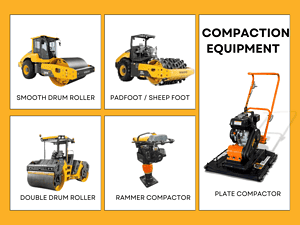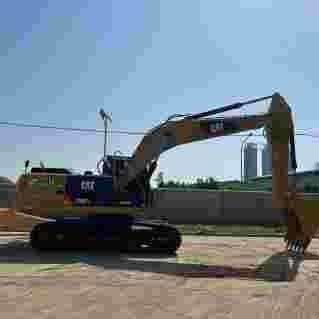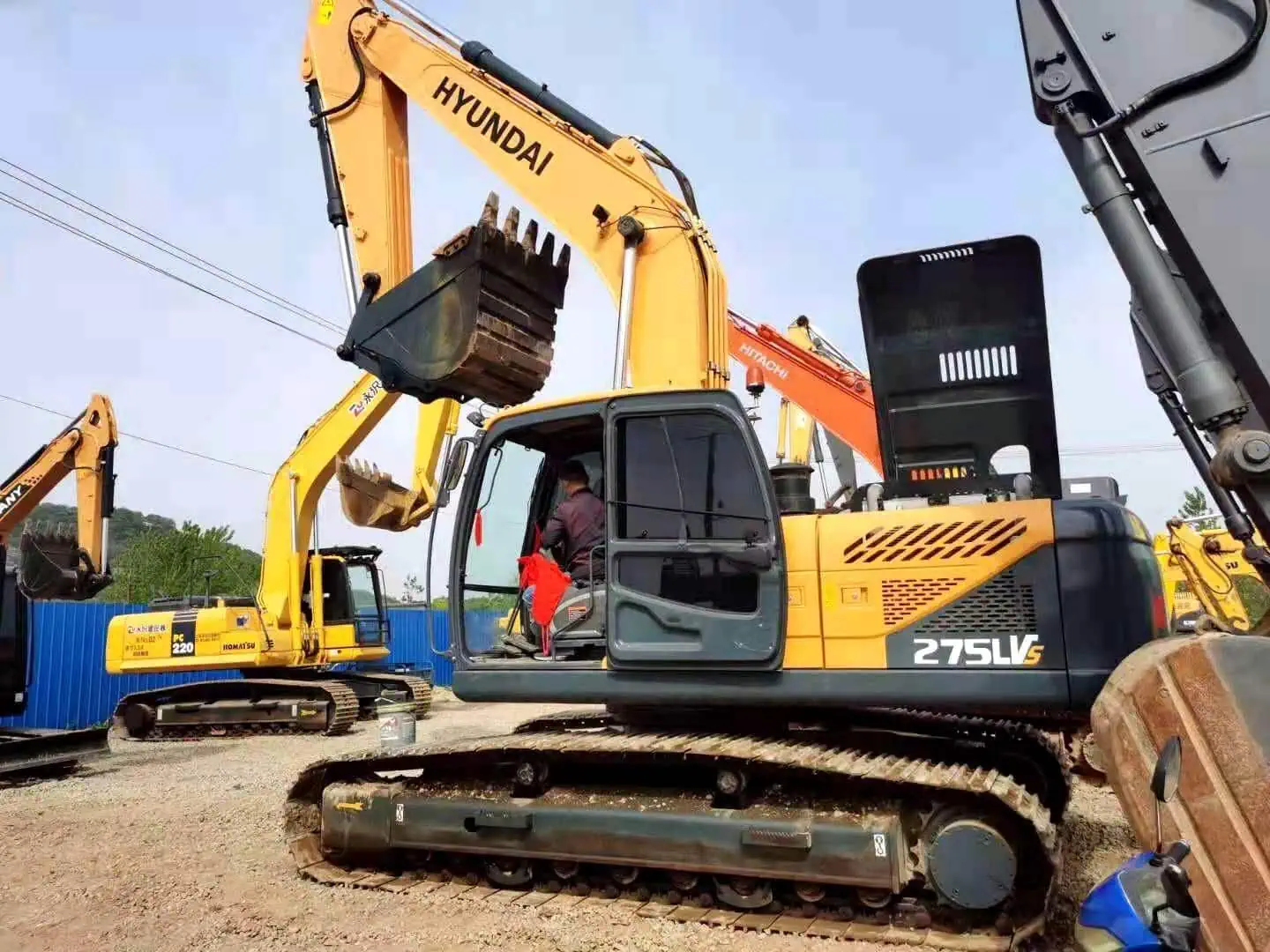This guide will help you identify the key uses you have for a new tractor. Once you know how you’re going to use the tractor, you can match those needs to the right machine. Once you narrow down your choices to a specific size and model of tractor, you can use the internet to find hundreds of different tractors for sale within seconds.
Choosing the right type of tractor for your small farm is essential for maximizing efficiency and productivity. Compact, sub-compact, and utility tractors each offer unique advantages depending on your farm size, terrain, and tasks. This guide outlines the key factors to consider and provides helpful comparisons, ensuring you select the best tractor for your operations. Whether you need something lightweight or more powerful, we’ll walk you through the best choices available.
Now that we’ve covered the basics, let’s dive deeper into each type of tractor and help you make the best choice for your farm.

Índice
AlternarFactors to Consider When Choosing a Tractor for Small Farms
Farm Size and Terrain
The bottom line is the size of your farm and the terrain will make a big difference on which type of tractor will work the best for you. On a small farm, a compact or sub-compact tractor is typically more useable because of its size. You can get around buildings and in tighter areas with ease.
On large farms or large acreage with hilly and uneven terrain, a utility tractor is better because it has more stability and more horsepower. Also, a utility tractor can offer you more size options to cover the 50-to 110-horsepower range. If the land is soft, marshy or rough and rocky in nature, certain utility and farm tractors offer more tire options and more traction to get you through those conditions.
Tractor Type vs Farm Size and Terrain
| Tractor Type | Ideal Farm Size | Terrain Suitability | Horsepower (HP) |
| Compact Tractor | Small (1-5 acres) | Flat to moderately hilly | 15-40 HP |
| Sub-Compact Tractor | Very Small (0.5-3 acres) | Flat land, gardens, lawns | 15-25 HP |
| Utility Tractor | Medium to Large (5+ acres) | Hilly, rocky, or large fields | 40-75 HP |
Type of Work
What tasks you need that tractor to do will play a significant role in the type of tractor you need to select. Work such as mowing and tilling and light hauling can typically be handled by a compact or sub-compact tractor. However, if you’re doing heavy plowing, soil cultivation, lifting, etc., then you need a utility tractor. You must match the job to the horsepower and capability of the tractor. Also, you need to think about what other things you will be doing with this tractor that it maybe wasn’t specifically designed for when you buy it.
Task Type vs Tractor Choice
| Task Type | Suitable Tractor Type | Horsepower Needed | Recommended Attachments |
| Mowing | Compact, Sub-Compact | 15-25 HP | Rotary mower, Finish mower |
| Tilling | Compact, Utility | 25-40 HP | Tiller, Cultivator |
| Heavy Plowing | Utility | 40-75 HP | Plow, Disk harrow |
| Hauling | Compact, Utility | 25-75 HP | Front loader, Trailer |
Budget Considerations
vehicle, you’ll likely outgrow your equipment sooner than later. For really small farms, the sub-compact, compact, and utility tractors can all do the job, but as that farmstead grows, you’ll need to push more utility out of each piece of equipment. The larger the tractor you can afford the better. A used compact or utility tractor will last longer because they were built to work. A sub-compact tractor was built for weekend duty around the estate.
| Tractor Type | Initial Cost Range | Custos de manutenção | Eficiência de combustível | Suitable For Budget-Conscious Farmers |
| Compact Tractor | $12,000 – $20,000 | Moderado | Alto | Yes |
| Sub-Compact Tractor | $8,000 – $12,000 | Low | Very High | Yes |
| Utility Tractor | $20,000 – $30,000 | Alto | Moderate to Low | No |

Types of Tractors Best Suited for Small Farms
Compact Tractors
With this type of small farm tractor, budget is always the critical factor. For a small operation, both the initial price and the long-term maintenance costs for the sub-compact and compact tractors are probably your best bet. Utility tractors are more expensive in the short term, but in the long run they’re more versatile if you have to start
doing things on a larger scale.
Compact Tractor Popular Models
| Modelo | Horsepower (HP) | Key Features | Price Range |
| John Deere 1025R | 23 HP | 4WD, Power steering | $15,000 – $20,000 |
| Kubota BX1880 | 18.5 HP | Compact, high maneuverability | $12,000 – $15,000 |
| Massey Ferguson 1735E | 35 HP | High load capacity | $18,000 – $22,000 |
Sub-Compact TractorsSub-Compact Tractors
Sub-compact tractors are usually powered by diesel engines and range from 15 to 25 horsepower. They come with a variety of implements you can use to tackle all kinds of tasks. You can also add a mid-mount mower for cutting grass or for trimming weeds around a pond, under trees, or along fence lines. You can put a front-end loader on a sub-compact tractor as well.
These loaders have a 48- to 60-inch lift height, give you lots of lifting power, and can support an entire range of implements. Many folks never use their car or pickup to haul anything once they’ve bought a front-end loader! Finally, you can add a backhoe to a sub-compact tractor. A backhoe on one of these small tractors only weighs around a thousand pounds. It works wonders when digging ditches, installing culverts, or moving dirt.
Sub-Compact Tractor Popular Models
| Modelo | Horsepower (HP) | Key Features | Price Range |
| John Deere 1023E | 23 HP | Ideal for small lawns | $12,000 – $14,000 |
| Kubota BX2380 | 23 HP | Easy handling, fuel-efficient | $10,000 – $12,500 |
| Mahindra eMax 20S | 20 HP | Affordable, good for landscaping | $11,000 – $13,000 |
Utility Tractors
While they are not quite as maneuverable as a lawn tractor or a compact or sub-compact utility tractor, they generally still offer a good balance of size, power, and versatility and are perfect for a lot of rural landowners who may have more work than a typical consumer-style tractor can handle.
Utility Tractor Popular Models
| Modelo | Horsepower (HP) | Key Features | Price Range |
| Kubota L3901 | 39 HP | Powerful, durable | $22,000 – $25,000 |
| John Deere 3038E | 38 HP | High-performance for heavy-duty tasks | $20,000 – $23,000 |
| Massey Ferguson 1700M | 40 HP | Excellent load capacity | $24,000 – $27,000 |

How to Choose the Right Tractor for Your Farm
Assess Your Farm’s Workload
The tasks you need to do with your tractor will determine what type of tractor to get. If you only need to mow, do some light tilling and move dirt around, a compact or sub-compact will work fine. If you need to turn the dirt over deep, or need to lift heavy stuff like a round bale of hay or a heavy pallet, you’re going to need a utility tractor that’s bigger with more horsepower, more hydraulic flow and more carrying capacity. Perform your workload task(s) assessment to see what HP you need and what attachments you need.
Tractor Choice Based on Workload
| Workload | Suitable Tractor Type | Recommended Horsepower | Common Attachments |
| Light Mowing | Compact, Sub-Compact | 15-25 HP | Mower, Grass catcher |
| Heavy Tilling | Compact, Utility | 30-50 HP | Tiller, Harrow |
| Lifting/Hauling | Utility | 40-75 HP | Loader, Forklift |
| Snow Removal | Compact, Sub-Compact | 15-25 HP | Snow Plow, Snow Blower |
Maneuverability and Size
Small farms with tight spaces, numerous obstacles, and narrow paths are well-suited to compact or sub-compact tractors because of their size and agility. These machines can easily navigate tight corners, narrow paths, and low-clearance areas. If the spaces you need to work in are more open with fewer obstacles to navigate around, a utility tractor might be a better option, but you may still find it a tight squeeze in some areas.
Long-Term Investment
The idea here is that a tractor is a long-term investment, so consider the total cost of ownership. While utility tractors may cost more upfront, they can provide the most value because they can do more things, which
means you need fewer pieces of equipment to buy or maintain. On the flip side, compact and sub-compact tractors can do specific tasks. They cost less upfront, but you may have to buy multiple pieces of equipment to
handle all the jobs you do on your property.
Popular Tractor Attachments for Small Farms
Mowers and Tillers
Mowers and tillers are critical attachments to keep healthy fields, lawns, and gardens and to prepare the garden for planting. And, particularly small farms need to be versatile. Compact and sub-compact tractors are best for this work because they are small and easy to handle. For mowing you use a rotary mower or a finishing mower. Tillage, or tilling, is turning over the soil to break up compacted soil before you plant crops.
Popular Mowers and Tillers Attachments
| Attachment | Tractor Type | Ideal Use | Price Range | Features |
| Rotary Mower | Compact, Sub-Compact | Mowing large areas | $1,000 – $2,500 | Adjustable cutting heights, wide decks |
| Rear-Tine Tiller | Compact, Utility | Soil preparation | $1,500 – $3,000 | Efficient in rocky soil, adjustable tines |
| Finish Mower | Sub-Compact | Lawn mowing | $800 – $2,000 | Provides a clean, smooth cut |
You will be able to do more things and do them with less work and time. This is especially important for small farms that have to do a lot of different things while staying within a budget.
Loaders and Backhoes
Loaders and backhoes help you move material around your farm. Use loaders to help you move dirt, gravel, feed, and other things. Use a backhoe for digging trenches and minor excavation work. These tools can be added to compact and utility tractors very easily and give smaller farm operations a way of managing larger jobs without separate heavy equipment.
Loaders and Backhoes Attachment Comparison
| Attachment | Tractor Type | Ideal Use | Price Range | Features |
| Front Loader | Compact, Utility | Material handling, lifting | $3,000 – $8,000 | High load capacity, quick attach system |
| Backhoe | Utility, Compact | Excavation, trenching | $5,000 – $12,000 | Digging depth up to 10 ft |
Loaders and backhoes increase the usefulness of your tractor by making it an all-in-one machine for anything you might want to do—from construction to landscaping daemons.
Snow Removal Attachments
What makes a bigger, aisle-tractor-based snowblower attractive to some users is its ability to feed more snow. You can also get a snowplow blade for a compact tractor, and even a salt spreader. But another choice is to go with a smaller, walk-behind-type machine.
Snow Removal Attachments for Tractors
| Attachment | Tractor Type | Ideal Use | Price Range | Features |
| Snow Plow | Compact, Sub-Compact | Clearing snow from roads | $1,500 – $4,000 | Adjustable blade angle, durable material |
| Snow Blower | Compact, Sub-Compact | Snow clearing in large areas | $2,000 – $6,000 | High snow discharge height, quick attachment system |
Our snow removal attachments make it affordable to keep your farm operational when winter weather hits. You can quickly remove the snow without having to buy a separate snow removal machine.

Tractor Fuel Efficiency: What You Need to Know
Fuel Consumption Considerations
Fuel efficiency is an essential consideration when selecting the right tractor for your farm. Here’s what you need to know about fuel efficiency and the various tractor sizes: Sub-compact tractors will have the best fuel economy on a tank of diesel due to their smaller size and lighter weight. Utility tractors will have the worst fuel economy relative to horsepower due to the increased horsepower and ability to handle more difficult tasks.
Tractor Fuel Consumption Comparison
| Tractor Type | Fuel Consumption (Per Hour) | Typical Fuel Tank Size | Ideal Tasks |
| Sub-Compact Tractor | 1-2 gallons | 6-10 gallons | Mowing, gardening |
| Compact Tractor | 2-4 gallons | 10-15 gallons | Tilling, small hauling |
| Utility Tractor | 4-6 gallons | 15-30 gallons | Heavy plowing, lifting |
Fuel efficiency is something you consider along with how much power you need from your farm tractor. The smaller tractor is going to have better fuel efficiency. The big tractor is going to use more diesel per hour than a smaller machine. But, it can get the job done faster, so the big tractor might actually be more efficient in the long run purely on a productivity basis than the small tractor.
Diesel vs. Gasoline Tractors
Diesel engines are more fuel efficient, especially under heavy load like plowing or going up a hill. Diesel engines have more torque, which is helpful when you’re up against tough conditions like snow or pulling something heavy like a trailer or plow. It’s always easier to do this with a diesel than a gas engine. However, gasoline engines have a lower initial price and might work better for smaller tasks or chores on a small farm.
Diesel vs. Gasoline Tractor Comparison
| Tractor Type | Engine Type | Eficiência de combustível | Price Range | Best For |
| Diesel Tractor | Diesel | Higher torque, more efficient | $20,000 – $30,000 | Heavy-duty tasks (plowing, lifting) |
| Gasoline Tractor | Gasoline | Lower efficiency, cheaper upfront | $15,000 – $20,000 | Small tasks (mowing, light hauling) |
Choosing between diesel and gasoline is really just a matter of how hard you are going to work the tractor. Diesel is going to be a better fit if you are going to work the tractor really hard. It is ideal for big tractors and big jobs. On the other hand, gasoline is perfect for smaller tractors and for a smaller workload.
Maximizing Tractor Fuel Efficiency
To maximize fuel efficiency, it’s essential to maintain your tractor regularly. Clean filters, proper tire pressure, and ensuring your tractor’s engine runs optimally can help minimize fuel consumption. Additionally, you can reduce fuel consumption by using the right size tractor for your needs and avoiding overloading.
Tips for Maximizing Tractor Fuel Efficiency
| Tip | Beneficiar | Best For |
| Clean Air Filters | Improved air circulation | All tractors |
| Maintain Tire Pressure | Reduces drag, improves fuel economy | Compact, sub-compact tractors |
| Avoid Overloading | Prevents engine strain | Utility tractors |
To keep your agriculture equipment up and running, keep maintenance in mind. Regular maintenance not only keeps your tractor running in the fields but also increases fuel efficiency and extends the life of your machine.

Tractor Safety Features for Small Farms
Essential Safety Features
When choosing equipment, the primary concern should be your safety. Farmequipment, including tractors, has evolved for many years to ensure the safetyof an operator. To be sure you are buying a safe used tractor, look for onesthat have the Roll-Over Protective Structures (ROPS), seat belts, and safetywork lights installed. These items stop common injuries with a rollover. Inthe case of work lights, the light lets operators be seen during low light.
Essential Tractor Safety Features
| Recurso | Propósito | Tractor Types |
| Roll-Over Protection (ROPS) | Protects the operator in case of a rollover | All tractors |
| Seat Belts | Keeps the operator secured | All tractors |
| Safety Lights | Increases visibility | All tractors |
Your safety is your number one concern when using any of these typesof equipment. All of this equipment has been developed over the years tomake sure you are safe when you have to jump off a tractor, a machine, orany other type of equipment.
Tractor Handling Safety
Safely operating a tractor means handling and operating it in such away you don’t hurt yourself or anyone else. You literally can get killedif you don’t treat it with respect. You need to practice, read the manualfor whatever you are using, and pay attention to the safety aspects in yourmanual. When in doubt, have someone else run it or go do it for you if youare uncomfortable operating it. Always chock a tractor and give it someelbow room, especially when picking up any type of bucket such as a boxblade, a front blade, or pulling when you are using three-point equipment.
Tractor Handling Safety Tips
| Tip | Beneficiar | Best For |
| Operate at Safe Speeds | Prevents tipping or accidents | All tractors |
| Use Proper Equipment Attachments | Ensures stability while working | Loaders, Backhoes |
| Keep a Safe Distance | Avoids injury from moving parts | All tractors |
Conclusão
Choosing the right type of tractor for your small farm is a crucial decision that will impact the efficiency and success of your operations. By evaluating factors such as farm size, terrain, tasks, and budget, you can make an informed decision and select a tractor that will help you achieve your goals. Whether you need a compact, sub-compact, or utility tractor, each type has its advantages depending on your specific needs.
With the information provided and the comparison tables, we hope you are better equipped to make a decision on which type of tractor is best suited for your farm.
Siga -nos em:YouTube.










